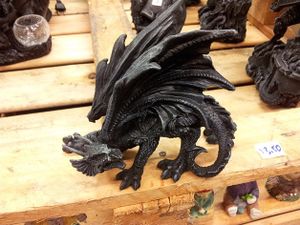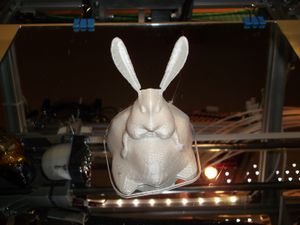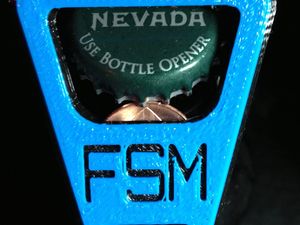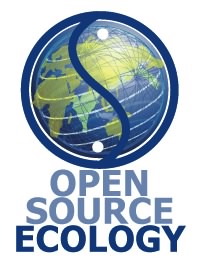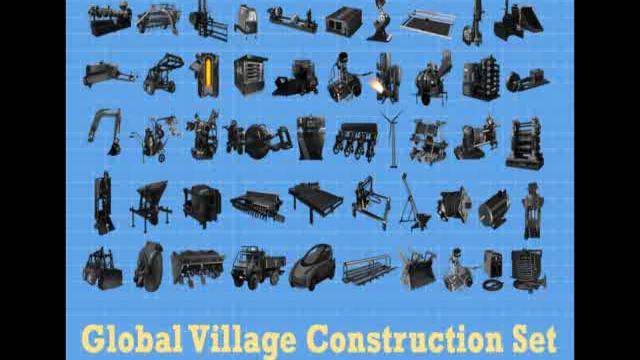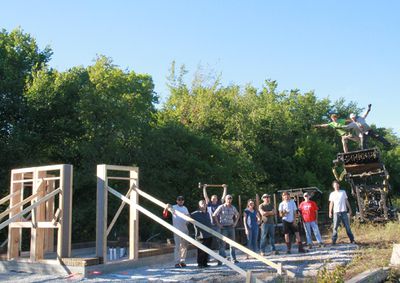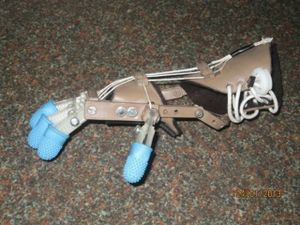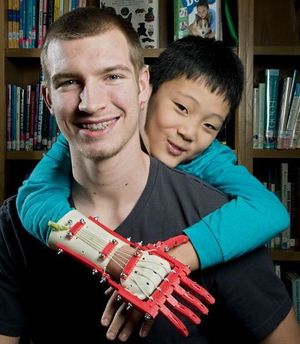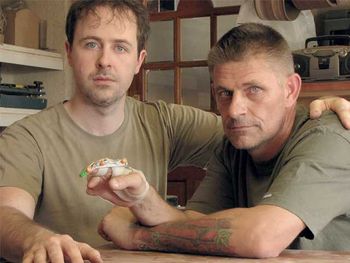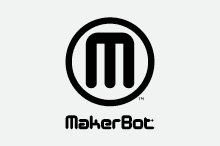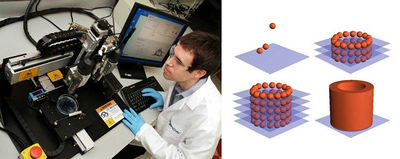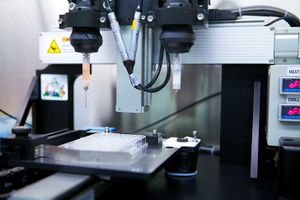User:Heisenberg Jones/Blog
Contents
Blog 1: Thingiverse Scavenger Hunt
My first task was to explore the open-source 3D model site Thingiverse and share various types of designs with the class. Thingiverse
1)Something amazing/beautiful
This stunning dragon must have taken ages to design. The level of detail put into the scales and face, not to mention the overhang of the wings and head, is incredible. I suppose the person who designed it was a graphic / mixed media artist to begin with, but it's neat to think that instead of being done by hand (where the subtractive medthod comes in handy for quick edits and detailing), this design was engineered to print out as one whole piece. Source
2)Something funny or strange
After several minutes of typing in random search terms in hopes of something mildly funny/unsettling, I typed in "fat", expecting a Peter Griffin head or Jabba the Hutt. Instead, I was treated to a file called Fat Bunbun, what I imagine someone on LSD would see while watching Bugs Bunny. While tempting to print out and present as a gift to your worst enemy, Fat Bunbun has only begun to haunt my dreams...the first night of many. Be warned: while appearing sluggish and stupid, Bunbun's creepiness is compensation enough. Source
Something useless
As someone who was never really into sports (YAY, we scored the points, now we just score more points than the other side, whoo), I already had a bias against these "glasses". However, from a purely functional role, these glasses fail. The point of these glasses is to show support for the 49ers, presumably during a game. I'll bet you can't see the person in front of you, let alone the court, if you wear these to the playoffs. Good effort, but seriously, this is like printing a blindfold. A pirate patch would have been more useful...at least then it can be fun. Source
Something useful
When searching for something useful, the term ubiquitous came to mind. This bottle opener can be assembled by inputting a coin of your choice, and the fact that one can adjust the slot for the coin based on currency/location is handy. But wait, there's more! Imagine: You're at a party with friends, having a good time. You see someone you like with an unopened bottle of...soda. Yeah. But, oh no! Looks like that guy everyone hates has stolen the only bottle opener in the joint. Aha, you say. Here's my chance to be a hero. Suavely walk over to the person you like, and say, "Can I borrow a quarter? I'll make it worth your while." Assemble this reusable bottle opener, open 'er up, and there you have it: you are now the life of the party. Also good for travel (avoid those metal detectors, then just use a coin from your wallet later). Source
Something which surprised me
This statue, while well made, seemed dangerous to be on Thingiverse. Simply put, I was surprised Disney had not sent an army of lawyers to contest their copyright claim on one of the most recognizable rodents in the world. Source
Overall, it was fun exploring Thingiverse and getting a taste for the possibilities of 3D printing. I even saw a model of a heart...seems like a good place to start for a side project or later assignment. From the coolest and most functional to the crappiest and bizarre, Thingiverse has it all.
Blog 2: Open Source Ecology
This week's task was to learn about Marcin Jakubowski's Open Source Ecology Project, a marriage between open source software and industrial machinery essential to jumpstart a civiliation. After delving into the history of the project and reading some reviews of Marcin's work, I had a bit to say on the topic.
1) What is OSE? What do they do? Are they legit?
The OSE GVCS (Global Village Construction Set) reminds me a lot of the G.E.C.K. (Garden of Eden Creation Kit) from the Fallout series: a one stop DIY jackpot ready to jumpstart a community. It aims to provide accessible agricultural and structural machinery to people looking for a functional unit whose schematics can be changed by the community based on direct user feedback (the OSE wiki), not a brand-name luxury device. It sounds like a dream come true for third-world farmers and just average DIY-ers. The goal is philanthropic enough, and has progressed steadily: from the time the TED talk was given, OSE went from 4 functioning industrial machines to 12, with 38 still to go. Along with that, a 3rd party group successfully reproduced one of their machines, the brick press, three years ago. I also found out that the entire team working at Factor e farm works on a meager budget of $4000/month, yet according to the Gantt chart below, are aiming to knock out 1-3 technologies per month while expanding. While I'm impressed with their ambition, I doubt that the 20-member staff can accomplish that level of production.
One thing I both appreciate and distaste is OSE's "build days". Marcin invited donors who donated $256 or more to the Kickstarter to "get their hands dirty" and help with the construction of a prototype. While it is a good way to gain capital, it would have been far better to hold an open-build day open to the public. It would have stirred up much interest, and shown that OSE was more community-oriented. OSE is, however, reaching out across the world, collaborating in open-source fashion. Overall, I give OSE the thumbs up, and believe that if they expand a bit more, the 50 piece GVCS will be completed before 2030.
2) A critique by The New Yorker, and Marcin's witty retort
While I could only access Page 1 of the New Yorker Article, I gleaned enough from that page and Marcin's response to get the main points. The New Yorker published an article about Marcin's Factor e farm in Missouri, and rather than focus on the devices and technology being developed there, they chose instead to write a profile piece on Marcin combined with a description of the "failed commune" he runs. They criticized the harsh living conditions on the farm, anything from extreme temperatures to lack of amenities. They make Marcin seem like a slave driver pushing his volunteers during the 40 hours/week of work. Marcin responded to The New Yorker's accusations with a post on the OSE wiki page with a fair amount of sardonic wit. He would rather they had focused on the goals of the project than the community he created, which he claimed was "only one instance of the numerous applications of our work." I found the New Yorker article to be, as Marcin put it, melodramatic. The volunteers at Factor e farm know what they are getting themselves into: they want to do a hard day's work and help test a bridge between open source software and the resulting hardware. If other people don't think the conditions are appropriate, why not judge monks living in harsh mountain monasteries in Nepal? In another publication, "Mechanical Engineering Magazine", Associate Editor Jeffrey Winters stated of OSE: "These guys aren’t Amish—they want to build their own car. They believe in technology. They just want it created and used at a more human scale." That said, Marcin does state that Factor e farm is "an experiment", and while the final result is unclear, he believes that recent organizational shifts (team and department leads), will prove useful. Also, he plans to build a recreational area for the workers on the farm, which may make the tough conditions a little more bearable. As an optimist at heart, I choose to side with Marcin; he is a man with a plan and an unceasing fount of enthusiasm for his dream. If others share his dream, they will join in.
3) What if OSE spread to PSU?
I can think of two professors here at PSU who would be interested in an OSE extension or club. Scarlett Miller, who taught my EDSGN 100 class, is interested in the Industrial Engineering Design process: how it has changed from the past, how different people brainstorm, and how designs evolve over time. This is reminiscent of Marcin's idea of OSE as an experiment; there is as much to learn about the process of prototyping as there is about the capabilities. The second professor I would want on my team is Dr. Stephen van Hook, a physics PhD and avid DIY-er. He has constructed his own guitar and many other various projects, and endorses community coming together through a student forum on a site called piazza. There, students are encouraged to work together to learn more.
Sources:
OSE Kickstarter Page [1]
The OSE wiki [2]
Wikipedia Article on OSE [3]
Marcin's 2011 TED Talk [4]
New yorker article: [5]
Marcin's response: [6]
Quote from Mechanical Engineering Magazine [7]
Blog 3: Robohand
How 3D Printing has the fundamental ability to improve a person's quality of life
Back in May of 2011, Robohand designer Richard Van As lost a finger and portions of his other fingers on his right hand. As a practicing woodworker in , he researched several prosthetics online, but it was only when he saw the work of mechanical prop designer Ivan Owen that he discovered a design concept he really liked. Basing their design off of puppets Owen had created, the pair originally meant to return the functionality of Robert's finger with a simple prosthetic. However, when they were asked to create a prosthetic hand for Liam, a boy who was born without fingers on one hand, they expanded their design. The very first Robohand was completed in November 2012 in Van As's native South Africa.
Now flash forward to January 2013. By this point, Makerbot had donated 2 3D printers to Van As and Owen, and their first design was up on Thingiverse [8], where it is still available for download. They established Robohand as an open-source service, and have helped 200 people to date. Richard put it best, when he said, "Not only did we find a design partner, but we’re kindred spirits in that we're both frustrated by the fact that there are some things that just shouldn’t be commercialized—they're needs instead of wants—that are." [9] Since the design to print the hand was available to everyone for free (Robohand accepts donations rather than charging), the design empowers amputees and those with limb difference alike across the globe. That's how 16 year old Mason Wilde was able to print a Robohand for Matthew, a boy in his hometown in Kansas.
The choice Van As and Owen made was a philanthropic one; they very well could have commercialized their product and sold it to humanitarian organizations, possibly copyrighting it. Instead, they worked furiously to get their project going for Liam and hundreds more in need. I believe it was Van As's experience of losing his dominant hand's ability that evoked this hectic pace, creating a functioning prototype in less than a year. The irony of the situation is that they received help from Makerbot. Makerbot was once a non-profit open source project as well, but today they have evolved into a popular DIY business, selling 3D printers for domestic and industrial use. In contrast, I could download the major components (sans harness) of the Robohand today for free, and have a functional hand printed in 8 hours.
The Robohand project has widespread exposure. The story of initial build was published in South Africa Popular Mechanics [10], tech news sites and blogs [11][12], and even the Wall Street Journal.[13] Other stories of Robohand changing the lives of people like Liam have also cropped up, on local news sites like Kansas City Star[14] and prolifically on the Robohand Blog.[15]
The article in the Star showcased the fact that anyone can use 3d printing to improve the lives of people around them. With good initiative and an urge to better the world, we can all be creators. While others choose to print gun components (that's a whole other story / fiasco), individuals like Mason, Van Ans, and Owen are choosing to create for good.
Blog 4: Responses to Blog 2 of Classmates
Many of my classmates had interesting points in their Blog 2 Posts about the OSE project.
Teammate Responses
My fellow teammates shared my positive sentiment regarding Marcin's project, at least generally. Drew made a good point that the expertise of the workers was an important issue to consider, for while many people may be inspired to join the Factor e farm, the potential success depends on their training. This resonated with my opinion that the training "build days" should be truly open source, serving as a means for anyone with interest and ideals to get a grasp on what building an agricultural machine in a day truly entails. He did admire Marcin's plan, though. Eric complimented the OSE initiative, praising its simple approach. I didn't include the idea of a simple life in my response, but Eric really connected with Marcin's vision. He preferred Marcin's simple, delocalized villages to the complex society in which we live today. Brian wrote a passionate response to the NY Times article. He was committed to the idea of OSE, stating that it has much potential. While it faces the problems of many startups, it is his belief that critics like Emily Eakin should give the project some time to develop before judging so harshly. Rather than envision societies based on this model, like Eric envisioned, Brian views OSE as a philanthropic endeavor, giving isolated communities the means to help themselves. I lean more towards Brian's opinion, for while provincial life would have its own rewards, I'm comfortable in a semi-urban environment. However, I really liked Eric's idea of applying OSE concepts to campus, like his open source rooftop gardens.
Class Responses
The posts of other members in the class varied tremendously. Eva praised the project, and focused on how the project was really striving to reach as many people as possible, utilizing several languages in it wiki and blog. This is a good point; while English is one of the most spoken languages on the planet, there are regions where other languages dominate, and using multiple languages broadens the target areas where GVCS could reach. Hao had a very good point on the safety concerns of the equipment; if people without proper machining and usage training attempt to build and operate the machines, they pose a danger to themselves and others. Even one of the earliest completed systems, the Tractor, has no safety information, with this posted on the wiki: "No structural engineering analysis has been performed on the LifeTrac III or IV. If you choose to replicate this product you are doing so at your own risk and with this understanding." [16] Jarred offered a poignant comparison between unskilled workers and the Invisible Hand of Economics, who believe that "things will fall into place" just by them being there. He also provided a solid prediction on how the BOT would feel about at OSE team here: not very enthused. Given the board's current stance on our 497J class, it is unlikely an adequate amount of seed money would be appropriated, no matter how beneficial the experience could be at what was ORIGINALLY AN AGRICULTURAL SCHOOL *cough cough*. Jess and most of the class agreed that while the NY Times article showed some areas for improvement, it focused too much on Marcin and the faults of the project, not the big picture. At times, she thought the article was an attack on Marcin's character, and his subsequent response was simple self defense. Nam Pham agreed, saying that it was ridiculous focusing on Marcin's yoga routine rather than the project itself. She also supported the project, praising its goals and saying that she would build one of these machines in her own time, given the resources. If she (a qualified Mechanical Engineering Grad) joined, she would help catalyze Marcin's project, without a doubt.
Blog 5: Rep Rap Media Timeline
"A Look at Recent Developments in the 3D Printing Timeline"
Looking at the Media Page from 2009 onward, several developments stick out and continue to reappear. From their start in 2009, Makerbot spread both their machines and their name throughout the world, from DIY enthusiasts, the Colbert Report, to facilitating projects like the Robohand and starting up Thingiverse. Arguably, this is a very important development in the progression of 3D printing, as it allowed generic access of the technology to the general public, albeit it at a cost. By seeing how many branch projects arose as a result (Robohand, hermit crab shell builds, modeling organs for surgery), it is evident that the spread of Makerbot will continue to pop up in the timeline for years to come. Although they have gone closed-source, their machines still fill the needs of many industries, and will continue to sell.
Another important milestone from 2009 was Organovo's successful bioprint of blood vessels, the first print of its kind. After that point, companies like Organovo and institutions continued to research and print tissues and biomaterials. In July 20009, researchers from UPenn and MIT had their crack at it, printing a miniature liver. Another group received funding to study printing meat meant for consumption...which has yet to pan out. An overhyped story was the "rat heart cell-powered printer", from November 2012. While a novel idea, using rat heart cells as a power source is not sustainable or efficient, and will not likely pan out.
In July 2012, the first gun was 3D printed, an issue which continues to stir controversy even today. Congress has attempted to approach the issue, seizing some printers and claiming the designers broke the Undetectable Firearms act. However, parts of guns (stocks, grips, lower receivers), were printed and demonstrated by Defense Distributed, whose goal is to stir up the public in support of 3D printing firearms freedom. In March 2013, The Liberator, a fully 3D printed gun (sans firing pin) was presented to the world. Issues with this branch of 3D printing are likely to continue. This is a topic I am concerned about, for gun regulation is a necessity in this age. Improper gun safety and ownership is a factor in school shootings, accidental death, and crime. By printing guns in one's home, it is possible for young children to see it as a common practice; printing guns from PLA would be reminiscent of NERF guns and other toy guns. This could be pretty bad in the long run, and requires a lot of thought.
Blog 6: The Next Big Thing
What is the next step for PSU 3D printing?
In our class, we currently run Open Hybrid Mendels, printing one type of material (PLA). With these, we can print a variety of objects, and print more printer pieces. While this is great, the next step is already taking shape in the back of the room: the dual extruder. This development will allow us to print removable support material, multiple material prints, and has the potential to branch out into further areas (looking at you, bioprinting). An example would be printing cells and hydrogel, and then flushing out the hydrogel to leave the blood vessels behind. The printer in question would have to have precise temperature control and likely a new delivery system, so in terms of outfitting it it could be best to build a new one or add it to a partially built model. Thankfully, I may be working in a team outside of class to build a prototype. Dual extrusion could also allow for reinforced prints, using a light material for the main structure and a stronger material to build a mesh/interlocking rod support matrix. From heavy duty mechanical replacements or a stronger i-Phone case, the possibilities are great.
Another possibility would be composite printers, such as a Fibre Core extruder. This extruder uses a process called "pulltrusion" (pull + extrude) to pull a wire covered in expoxy through a melted plastic, and then extrude what is essentially an insulated wire. Other types of composite printers could lead to printing chips, wires, and other electronic components right into the object being printed! While the nozzle and feed line would need modification, the rest of our Mendels would be exactly the same. The prospective products from a fibre core could be as simple as coated wires or as complex as printing full electronic devices, no assembly required (although, that would involve a much more complex printer, essentially a small production line)
A third upgrade I could see in the near future would be a food printer, which I believe someone in the class is already interested in. Hershey has plans to start printing their chocolate via direct deposition, and a multiple extruder has already been constructed by MIT.[17] Using syringes to heat/store the materials as well as fans for rapid cooling, a different printer (perhaps a FAB), could be used as the basis for this.
